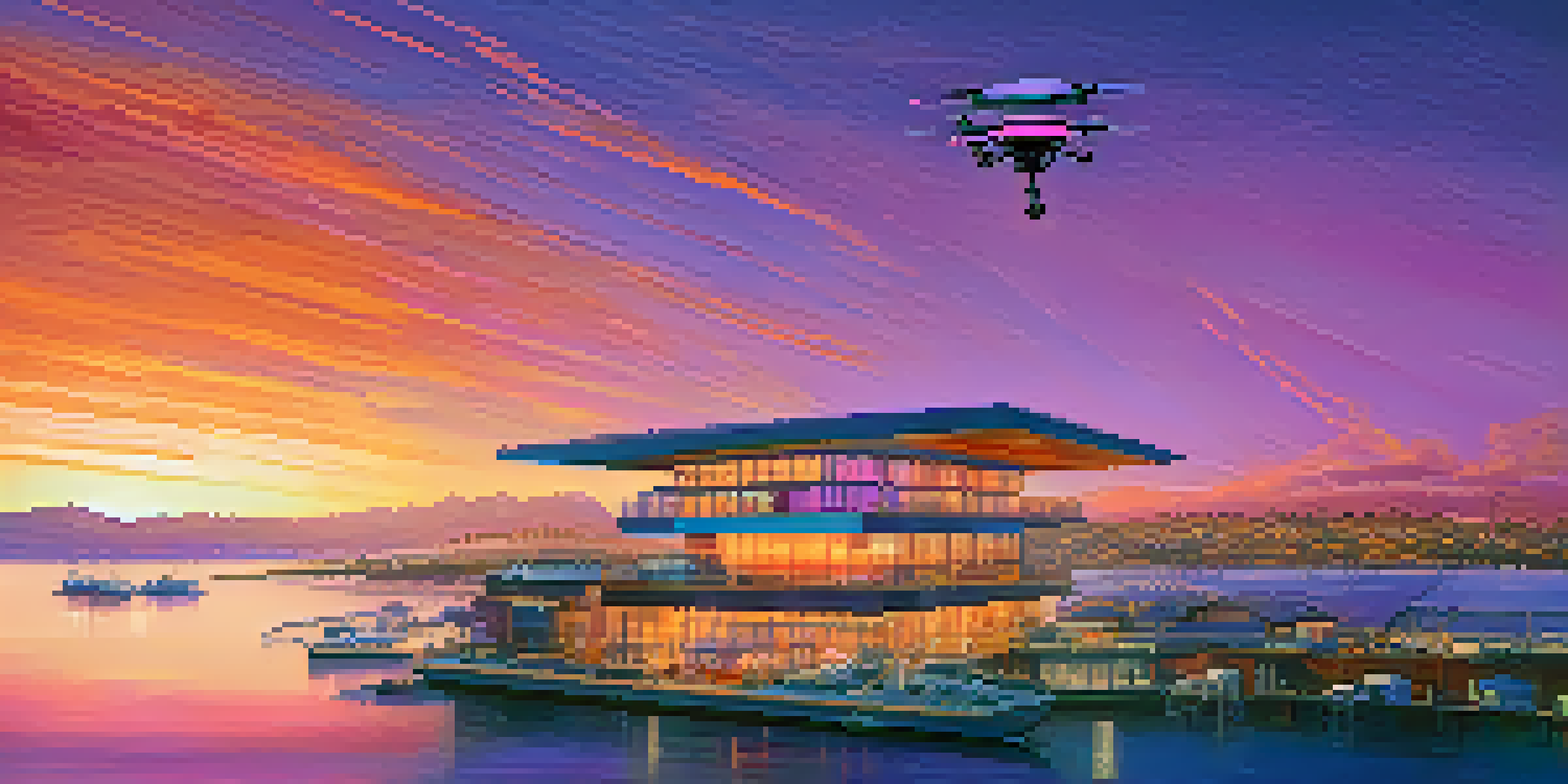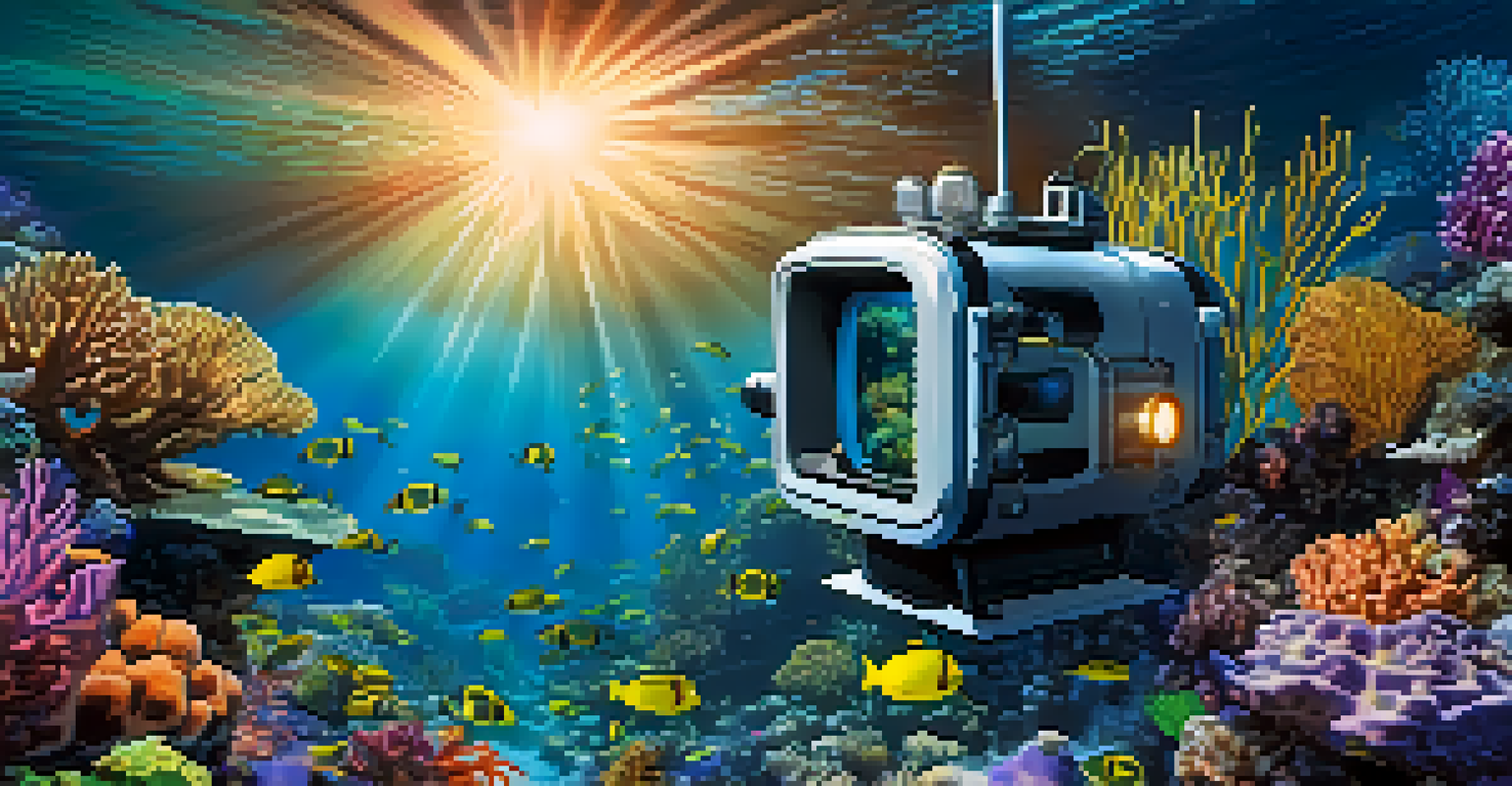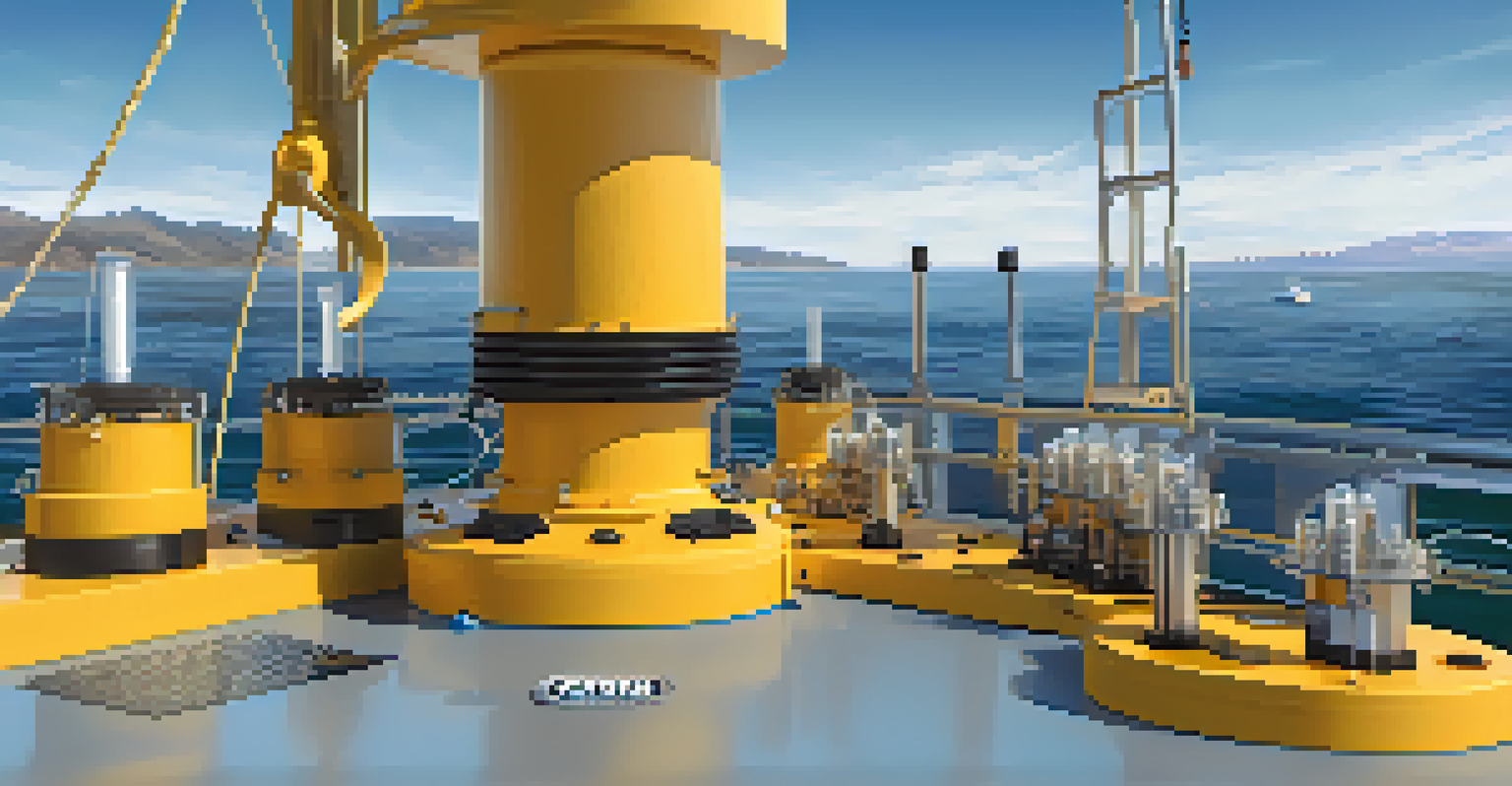Cutting-Edge Technologies Developed in San Diego's Oceanography

San Diego: A Hub for Oceanographic Research and Innovation
San Diego has long been recognized as a leading center for oceanographic research, thanks to its unique coastal location and rich marine biodiversity. The combination of top-tier universities, research institutions, and innovative startups creates a vibrant ecosystem for ocean science. This city attracts some of the brightest minds dedicated to exploring the mysteries of the ocean and developing technologies that can help us understand and protect marine environments.
The future is not something we enter. The future is something we create.
From the Scripps Institution of Oceanography to the UC San Diego campus, the area boasts a wealth of resources and expertise that drives cutting-edge research. Scientists and engineers collaborate on projects that range from studying climate change impacts on marine life to creating advanced underwater robotics. The result is a dynamic environment where new ideas and technologies flourish, positioning San Diego at the forefront of oceanographic innovation.
As we delve deeper into the technologies developed in this region, it becomes clear that the work being done here is not only groundbreaking but essential for the future of our oceans. These advancements have far-reaching implications for marine conservation, climate science, and even disaster response, making San Diego a pivotal player in global oceanographic efforts.
Drones and Unmanned Vehicles: Revolutionizing Data Collection
One of the most exciting advancements in oceanography has been the deployment of drones and unmanned vehicles for data collection. These technologies allow researchers to gather critical information from hard-to-reach areas of the ocean without the need for large research vessels. For instance, companies in San Diego are developing autonomous underwater vehicles (AUVs) that can explore the ocean depths while capturing high-resolution data on temperature, salinity, and marine life.

The use of drones also extends to aerial surveys, where they can monitor vast stretches of coastline and marine habitats quickly and efficiently. This not only saves time but also reduces the environmental impact associated with traditional research methods. By providing real-time data, these technologies enable scientists to make more informed decisions regarding marine conservation and resource management.
San Diego: Ocean Research Leader
San Diego is a hub for oceanographic research, driven by top universities and innovative technologies that enhance marine conservation.
As these unmanned vehicles become more sophisticated, they are equipped with advanced sensors and artificial intelligence capabilities. This means that they can not only collect data but also analyze it on the go, making the research process faster and more efficient. The integration of these technologies is a game-changer for the field of oceanography, allowing for unprecedented levels of exploration and understanding.
Innovative Sensor Technology: Enhancing Environmental Monitoring
San Diego's tech community is also making significant strides in sensor technology that enhances environmental monitoring of marine ecosystems. These sensors can measure various parameters, such as water quality, temperature, and nutrient levels, providing critical insights into the health of ocean habitats. By developing low-cost, highly sensitive sensors, researchers can deploy them in a variety of settings, from coastal waters to deep-sea environments.
We do not inherit the earth from our ancestors; we borrow it from our children.
One notable example involves the use of connected sensors that feed data back to central databases in real time. This allows for continuous monitoring and quick response to changes in ocean conditions, such as harmful algal blooms or pollution events. The ability to track these changes as they happen is crucial for effective management and conservation efforts.
Moreover, the integration of IoT (Internet of Things) technology into these sensors means that they can communicate with each other and share data seamlessly. This interconnectedness opens up new possibilities for collaborative research and data analysis, enhancing our overall understanding of oceanographic phenomena. As sensor technology continues to evolve, the potential applications for marine science are virtually limitless.
Artificial Intelligence: Transforming Oceanographic Research
Artificial Intelligence (AI) is making waves in oceanography, with San Diego leading the charge in applying AI to analyze complex ocean data. By leveraging machine learning algorithms, researchers can quickly process vast amounts of information collected from various sources, such as satellite imagery and underwater sensors. This capability allows scientists to identify patterns and trends that would be nearly impossible to detect manually.
For example, AI can help predict the movement of marine species in response to changing environmental conditions, improving our understanding of migration patterns and habitat usage. This knowledge is vital for effective conservation strategies, as it helps to anticipate the impacts of climate change on marine ecosystems. Additionally, AI-driven models can assist in forecasting natural disasters, such as tsunamis, by analyzing historical data and real-time oceanographic conditions.
Drones Transform Ocean Data Collection
The use of drones and unmanned vehicles in San Diego allows for efficient and detailed data collection from hard-to-reach ocean areas.
The synergy between AI and oceanographic research represents a significant leap forward in our ability to study and protect the oceans. As researchers in San Diego continue to refine these technologies, we can expect to see even more innovative applications that enhance our understanding of the marine environment and inform policy decisions.
Robotics in Ocean Exploration: Pushing Boundaries
Robotics has become an integral part of ocean exploration, with San Diego being home to several pioneering initiatives in this field. Underwater robots, equipped with sophisticated imaging and sampling technologies, are revolutionizing how we explore the ocean floor and study marine species. These robots can operate in harsh environments where human divers cannot safely venture, opening up new avenues for research.
One remarkable project involves the use of remotely operated vehicles (ROVs) that can capture detailed images and videos of underwater ecosystems. These ROVs are helping scientists map the ocean floor, monitor coral reefs, and even conduct geological surveys. By providing a window into the depths of the ocean, robotics is enabling researchers to gather data that was once out of reach.
As technology advances, these robotic systems are becoming more autonomous and intelligent. With the ability to navigate complex environments and perform tasks without human intervention, they are expanding our capacity for exploration and discovery. The future of oceanographic research looks bright, thanks to the innovative use of robotics being developed in San Diego.
Sustainable Practices: Balancing Innovation and Conservation
As cutting-edge technologies emerge from San Diego's oceanography sector, there is a growing emphasis on sustainability and conservation. Researchers are keenly aware that while technological advancements can offer solutions to environmental challenges, they must also be implemented responsibly. This balance is crucial for ensuring that innovation does not come at the expense of the very ecosystems we aim to protect.
San Diego-based organizations are actively developing sustainable practices that integrate technology with environmental stewardship. For instance, efforts are underway to create eco-friendly materials for underwater sensors and robotics, reducing their impact on marine life. Additionally, many researchers are prioritizing projects that focus on restoring degraded habitats and enhancing biodiversity.
Sustainable Tech for Marine Conservation
Emerging technologies in San Diego prioritize sustainability, ensuring that innovation supports the preservation of marine ecosystems.
By adopting sustainable practices, the oceanographic community in San Diego is setting an example for other regions and industries. This commitment to environmental responsibility not only benefits marine ecosystems but also fosters public trust and engagement in ocean conservation efforts. Ultimately, the goal is to create a harmonious relationship between technological advancement and the preservation of our oceans.
Collaboration and Community: The Backbone of Oceanographic Success
The collaborative spirit in San Diego's oceanographic community is one of its greatest strengths. Researchers, engineers, policymakers, and community members work together to tackle complex ocean challenges, sharing knowledge and resources to drive innovation. This synergy is vital for fostering an environment where new ideas can thrive and lead to meaningful advancements in oceanography.
Local initiatives, such as partnerships between universities and private companies, are essential for translating research into practical applications. These collaborations not only enhance the quality of research but also ensure that technological developments align with community needs and environmental priorities. The integration of diverse perspectives enriches the research process and leads to more comprehensive solutions.

Moreover, the engagement of the community in oceanographic efforts helps to raise awareness about the importance of marine conservation. As residents become more informed and involved, they contribute to a culture of stewardship that supports ocean health. Ultimately, the collaborative approach taken by San Diego's oceanographic community exemplifies how collective efforts can lead to significant progress in understanding and protecting our oceans.
Future Directions: What Lies Ahead for Oceanography in San Diego
Looking ahead, the future of oceanography in San Diego is filled with promise and potential. As technology continues to evolve, we can expect to see even more groundbreaking innovations that enhance our understanding of the oceans. With ongoing investments in research and development, San Diego is well-positioned to remain a leader in oceanographic science and technology.
Emerging fields such as biotechnology and marine renewable energy are likely to gain traction in the coming years. Researchers are exploring ways to harness the ocean's resources sustainably, from developing biofuels from marine algae to creating energy from waves and tides. These initiatives not only address pressing energy needs but also contribute to a more sustainable future for our planet.
Ultimately, the work being done in San Diego will play a crucial role in shaping the global conversation around ocean health and conservation. By continuing to push the boundaries of technology and fostering collaboration, the oceanographic community here is paving the way for a deeper understanding of our oceans and the challenges they face. The horizon is bright for oceanography in San Diego, and the world stands to benefit from these advancements.